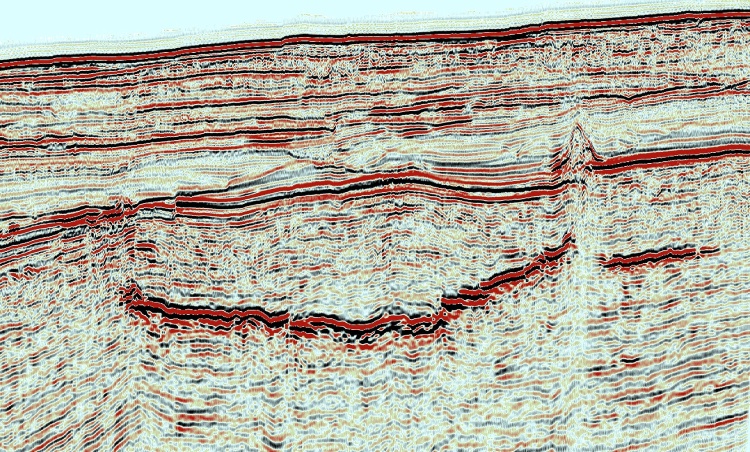During their careers, almost all academic ask themselves or others the seemingly simple question, “what do you need to do to get promoted?”. Indeed, it’s that time of year again at Imperial College (IC) when the results of the last promotion round are announced. There will be successes and disappointments, with candidates preparing to apply later this year hoping to learn something from this year’s applicants.
From my discussion with academics inside and outside of IC, answering the question above is tricky. This is al least partly due to: (i) the lack of specific or ‘tailored’ guidance on the criteria for promotion; and (ii) the lack of transparency related to the promotions process (which I will argue below may be real or perceived).
I’d argue that the promotions criteria at IC are fairly clear, falling into four main activities: (i) Education; (ii) Research; (iii) Leadership and management; and (iv) Profession and practice. The guidance states these activities are interrelated, and that candidates are expected to demonstrate achievements in all these activities, but to different extents. Our guidance also stresses that individual cases will be judged on their individual merits.

Staff may also be promoted from the lowest level to the highest, or to any intermediate level, as long as the criteria for the relevant level of promotion are met. Indeed, I have seen this at IC and in other institutions, when a particularly stellar period, perhaps comprising some exemplary administrative or teaching contribution, and/or significant grants or papers, led to a candidate essentially ‘leap-frogging’ a grade (or even two).
I guess I’m a fan of the flexibility encapsulated in the criteria wording; nobody wants to be decline for promotions because they average 2.5 vs. 3 papers per year, or they ‘only’ raised £45,000 vs. £50,000, or their teaching evaluations came out as ‘Very Good’ and not ‘Excellent’.
The 2015 ‘Richardson Review’, which, it might be argued, indirectly arose from the tragic death of Professor Stefan Grimm, enshrined the principle that attainment in these four activities should be recognised in a thoroughly evidence-based way, both when it comes to hiring and promotion. The impact of Grimm’s death and the Richardson Review are still being felt today.
I won’t recite IC’s Criteria for Promotion; they can be read in full here. However, because they are important for this and following blogs, I here summarise the key points:
Education
- Activities include: creative and clear teaching; development of appropriate curricula and courses; organisation of complex undergraduate and postgraduate programmes; design of appropriate assessment methods; teaching and assessing students with special learning needs; delivering teaching that recognises a diverse students cohort; effective feedback; incorporating change to meet the changing needs of students and the profession; tutoring; student support, welfare, pastoral care, outreach work; fostering students’ self-confidence and self-esteem to promote participation.
- Measures of recognition include: effective management of educational programmes; teaching existing courses extremely well; creating new courses or revitalising existing courses; commendations by external examiners; receipt of teaching awards; acting as an external examiner; contributions to student welfare and pastoral care; research student supervision.
- Progression in education will involve: a broadening of the contribution to education, from excellence in teaching delivery, through to the organisation and management of departmental education and student support activity, through to leadership in education research, and leadership on educational matters at Faculty and/or College level.

Research
- Activities include: undertaking independent and collaborative research; developing research proposals and winning financial support; planning, leading research activity and managing a research team; presenting findings at conferences; publishing results of research; planning and leading research activities of outstanding quality and national/international repute; contributing to the development and implementation of departmental/faculty research strategy.
- Measures of recognition include: the quality and quantity of research output; a sustained track record in attracting research funding; a national and/or international reputation for research, reflected in level of output, level of innovation, and the impact on the discipline or profession; widely recognised excellence and reputation among peers; the award of prizes; giving prestigious lectures; membership of national and international committees e.g. Research Council and professional or government committees; work on editorial boards of scholarly journals; visiting appointments at other institutions.
- Progression in research will involve: a growing national and international reputation combined with individuals making an increasing impact on their discipline or profession. At the Senior Lecturer level originality is important; seminal research and influence become of increasing importance in moving to Reader and Professor.

Leadership and Management
- Activities include, in addition to managing the individual’s own work, contributing to the management of the department/faculty/College; formulate research and teaching strategy; recruiting and selecting staff; managing and motivating staff to achieve their objectives; promoting equality and implementing equal opportunities; undertaking effective performance and development reviews; acting as an Academic Adviser or mentor; membership of internal and external committees; acting as an Athena SWAN coordinator; involvement in public engagement activities.
- Measures of recognition include proven capability to lead and design research/teaching programmes; effective and innovative formulation of research and teaching strategy; an active interest in personal development and developing others; regular involvement in staff development activities to develop academic, management and personal effectiveness skills; evidence of managing change successfully.
- Academic leadership becomes of increasing importance in moving from Senior Lecturer to Reader and Professor. Progression from Lecturer to Professor will involve an increasing contribution to departmental/faculty/College management and regular involvement in staff development programs.

There is another category, ‘Profession and Practise’ (i.e. involvement in consultancies; contributing to continuing professional development; membership/leadership of respected institutions/organisations/peer review bodies; acting as an expert witness), which I don’t talk about here as it’s not especially relevant to my discipline (or at least it was not an important criteria in any of my three promotion steps).
So having argued that, at least in print, promotion criteria are clear and, in my view, pleasingly ‘non-metricised’ (again, at least in print), I now turn my attention to the transparency of the process and my motivation for this blog series. This can be traced back to the “The turning tide: A new culture of responsible metrics for research” event, hosted by the Forum for Responsible Research Metrics (FFRM) and supported by the Higher Education Funding Council for England (HEFCE).
At this event, I was asked to sit on a panel discussing “The Researcher’s Perspective”. A key theme arising from the ‘Responsible Metrics’ event, which is echoed in many face-to-face and social media conversations I have with academics before and since, was ‘transparency’; i.e. not only are people worried about the statistical basis and thus value of metrics, but many feel they don’t even know what they are aiming for. In essence, what is a ‘good’ metric for a given career stage, in a given discipline, in a given institution?

At the end of my panel session at the HEFCE event, we were asked a simple question; “what one thing could be done by senior academic and academic managers to improve ‘transparency’ in academia, and to build confidence in the currents modes of assessment?”. My answer, which I’d not given a huge amount of thought at that point, was for us to share documentation of successful and unsuccessful application for promotions, and maybe even grants and employment. Even at the time I acknowledged this could be tricky, given that some of the associated documents contain personal and/or confidential information. However, I, and many of the attendees, saw value in the proposal, even if it’s Not What We Normally Do (*harrumph*).
So, to this end, I have decided to ‘publish’ the promotion documentation associated with my three promotion steps at IC; Lecturer to Senior Lecturer (2009), Senior Lecturer to Reader (2012), and Reader to Professor (2015). And motivated by a discussion with Ben Britton, I will publish a series of blogs to provide some context, with this one focused on my first promotion step (i.e. Lecturer to Senior Lecturer).

For this series, my intention is not to show off; especially as most this information in my promotion documentation is available on my website and associated CV. The very public nature of all my professional information motivates my willingness to share, as I strongly believe promotion documentation should not be confidential and I wish to encourage increasing the transparency of the process. I also hope that I can encourage colleagues to share their documentation too, in the vein that collectively we can improve the culture and shared understanding of the promotions process.
This documentation is not exhaustive with respect to a promotion, as there are absolutely critical details pertinent to my promotion that are NOT included in the main body of the promotion document that I supplied. For example, references are not included.
At Imperial College, as far as I recall, the step from Lecturer to Senior Lecturer requires six (6) references; one is a personal nomination by the applicant (I think I choose Prof Rob Gawthorpe, my PhD supervisor), and the other five are in principle selected by the applicant’s department, whereas in practise they are selected by the applicant’s department under the moderate guidance of the applicant…
Of the six references, I saw two. They were sent to me by the referees for comment, although I declined to make any. I, and the college I’m assuming, wanted the referees unabashed view of my candidature. I’m sure there’s some legal means to gain request to my references, but I (and I’m assuming others) don’t have the time or inclination. In fact, I think the references are simply kept on my file in HR, so I suspect I could ask them nicely if I wanted.
Another thing not presented here is a transcript of the interview itself; in 2008, applicants for promotion to Senior Lecturer were interviewed for 45 minutes, with the panel including the Head of HR and three academics not based in your department. The academic element of the panel were not Earth Scientists, it’s fair to say they had little or no detailed knowledge of my research; this is an interesting and important point when considering the potential use (and abuse) of metrics. The interview was not particularly penetrative.
I have not also included here: (i) copies of teaching evaluation (to be honest, at that time, student evaluation, at least for the MSc-level courses I taught on, was a complete disaster for many, many reasons); and (ii) four recent publications (“…which have had the greatest impact since the previous promotion or since appointment at the College, and that show what has been achieved in the interim.”), supported by a 100 word summary (“…of the importance and originality of the selected publications.”). I’m happy to provide these on request. I should add that the panel were, I’m guessing, supposed to read these papers (in line with the principles of DORA, which IC only signed in early-2017), although I didn’t get the sense they did.
Finally, there are come completely unseen, largely undocumented thing that may ‘support’ a promotion. For example, job offers or, at the very least, interest from other institutions may play an important role, although this was not especially relevant to my promotion from Lecturer to Senior Lecturer). Such interest is important, as it can help give a sense of your ‘market value’. For example, your present employer may not deem your profiles worthy of a certain grade or pay, but somewhere else might. Your employer may just be over-familiar with your contribution (or your contribution is masked by that of others), but offers and interest from other institutions may sensibly and reasonably be used as a bargaining tool. Again, this isn’t captured in most promotion documentation, but it’s certainly important to be aware of. Indeed, if you look at a colleague and cannot work out why they’ve been promoted never forget: (i) their performance in interview; (ii) the strength of their references; and (iii) their broader ‘market value’ as judged by an external body.
So, what do I hope to achieve from this? Perhaps a small amount of self-calm in that I’ve demonstrated some transparency, having initially raised this myself at the HEFCE event. People may also get an idea of what might be required to get a certain position at a certain institution.
However, my intention is NOT to make people think this is the ONLY profile that allows someone to get a certain position at a certain institution; instead, I rather hope it provides a flavour of the process. This can be seen by looking at the profiles of similar grade staff in my own department, in other departments/faculties in IC, or in any other institution. I hope that in providing transparency, for example by having ALL documents public, people may get a sense of the true variability in profiles that may allow promotion (or hiring).
Anyway, with all this in mind, you can now, time and sanity permitting, go through my Senior Lecturer promotion documentation and assess for yourself if, in 2009, I met the criteria outlined above. It is worth noting that, the way in which we evaluate how ‘good’ we are as academics, at IC and elsewhere, has undoubtedly changed over the last nine years; at IC, this has been at least partly driven by the Richardson Review and our recent signing of DORA. However, many things perhaps remain the same.

Hi Chris,
Thanks for sharing this. What I find very odd in academia is that it is all on you to get promotion and line managers have little to no role in the process. We are all so busy with all we have to do I never seem to have time to navel gaze and write my own promotion case. I am sure in other professions it is not like this.
Julian
At IC, in the past at least, line managers were pretty active in terms of highlighting promotion opportunities in your yearly appraisals. I certainly got nudged. Sometimes, whilst your navel-gazing, a friend needs to step-up and tell you to go for it. I’m that friend.